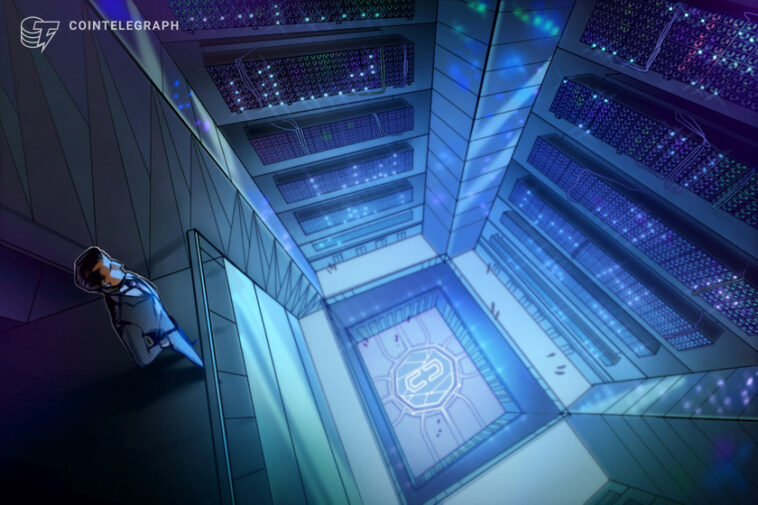Bear markets are for building, which is exactly why HashWorks CEO Todd Esse says BTC’s current pricing presents an opportunity for retail investors and industrial mining companies.
Recently, bad news has abounded, and the resulting fear is real. DeFi is looking dead, altcoins completed their lifecycle by returning back to $0 (I guess that’s a joke), and Bitcoin’s (BTC) price fell lower than even the smartest brains in the room expected.
A unifying theme of the most recent bull market appears to have been greed. Everyone got too confident and too greedy, and it shows by the amount of debt and leverage that is being unwound as 3AC, Celsius, BlockFi and Voyager contend with the real threat of going belly up.
It seems Bitcoin miners and BTC mining companies also were not immune to the sentiment of over-exuberance and the belief that “up only” was a fact until Bitcoin’s price hit the long-awaited $100,000 target most analysts stuck to.
Historically, Bitcoin miners are an elusive species that are quiet and unwilling to spill the sauce to the public, but Cointelegraph had some success in securing a moment with HashWorks CEO and founder Todd Esse to discuss the current state of the mining industry and his predictions on where the market might head over the next year.
Cointelegraph: Bitcoin is trading below the realized price, and it is also below the miners’ cost of production. The price is also below the previous all-time high and the hash rate is dropping. Typically on-chain analysts pinpoint these metrics hitting extreme lows as a generational purchasing opportunity, thoughts?
Todd Esse: I do believe that current prices represent an investment opportunity as current prices likely don’t reflect profitable mining margins as the industry is currently structured. In our opinion though, prices may continue to remain under pressure as the mining industry and associated leverage around it is reset or re-configured.
CT: What is the state of the BTC mining industry right now? We’ve heard that leveraged miners are going bust, sub-optimal, inefficient miners are turning off, gear could be in the process of being seized or liquidated at firesale. Listed miners’ stock price and cash flow is also looking pretty bad right now. What’s happening behind the scenes and how do you see this impacting the industry of the next six months to a year?
TE: In our opinion, mining still offers an attractive investment yield for those who are selective about approach and have long term goals. Much of the mining capacity currently installed is with ASICs in the sub 85 TH/s range and with energy contracts that haven’t been managed as a traditional large scale energy consumer would.
We’ve seen this movie before, right? Easy money + poor discipline = unbalanced risks. We could easily see a protracted period here where the mining industry consolidates and allows different investment capital to enter into the market.
Related: Friday’s $2.25B Bitcoin options expiry might prove that $17.6K wasn’t BTC’s bottom
CT: Exactly why is now a good or bad time to start mining? Are there particular on-chain metrics or profitability metrics that you’re looking at or is it just your gut feeling?
TE: Typically periods of distress and shifts in the accepted paradigm will offer advantages to new entrants. Our sole focus is to take advantage of these emerging opportunities.
CT: If I have $1 million in cash, is it a good time to set up an operation and start mining? What about $300,000, $100,000, $10,000? At the $40,000 to $10,000 seed fund range, why might it not be a good time to set up an at home or industrial-sized mining farm?
TE: If you had $1 million cash, it might be a good time to opportunistically pick up some BTC. Fully loaded production prices for the major miners aren’t far from these levels. I see it as difficult to maintain these levels until ASICs drop further in value. I think the time for home mining has largely passed as a result of new dynamics in the energy industry.
I would encourage those looking for yield to seek mining opportunities with companies like Compass Mining or other “cloud” miners whose equipment and energy contracts may yield an attractive investment as these dynamics change.
We believe as a result of current and expected disruptions in the market as well as greater acceptance of immersion solutions, there will continue to be attractive opportunities to build mining operations at scale.
CT: Does Bitcoin price dropping below its previous all-time high for the first time ever have any significant future ramification on the fundamentals of the asset and industry?
TE: In our opinion, no. Historical comparisons are difficult to rely on when dealing with an emerging commodity, and transformative technical asset such as BTC. Miners are producing BTC, given a set of inputs (computing power, access to capital, and energy) and the output price doesn’t always reflect the cost of production at all.
Mining BTC at scale, fundamentally, isn’t very different from producing oil and gas or other commodities. Improvements in drilling technology transformed North America’s position in global energy markets.
When oil and gas prices crashed during the early stages of the pandemic, no one questioned whether or not we needed to drive cars or heat our homes anymore. Mining supports the blockchain, and proof-of-work computing will prove to offer our grid the ability to transition to a renewable energy future.
We are committed to being an innovative and constructive participant in this industry as it continues to mature.
Disclaimer. Cointelegraph does not endorse any content of product on this page. While we aim at providing you all important information that we could obtain, readers should do their own research before taking any actions related to the company and carry full responsibility for their decisions, nor this article can be considered as an investment advice.





 BTC-USD
BTC-USD  ETH-USD
ETH-USD  LTC-USD
LTC-USD  XRP-USD
XRP-USD